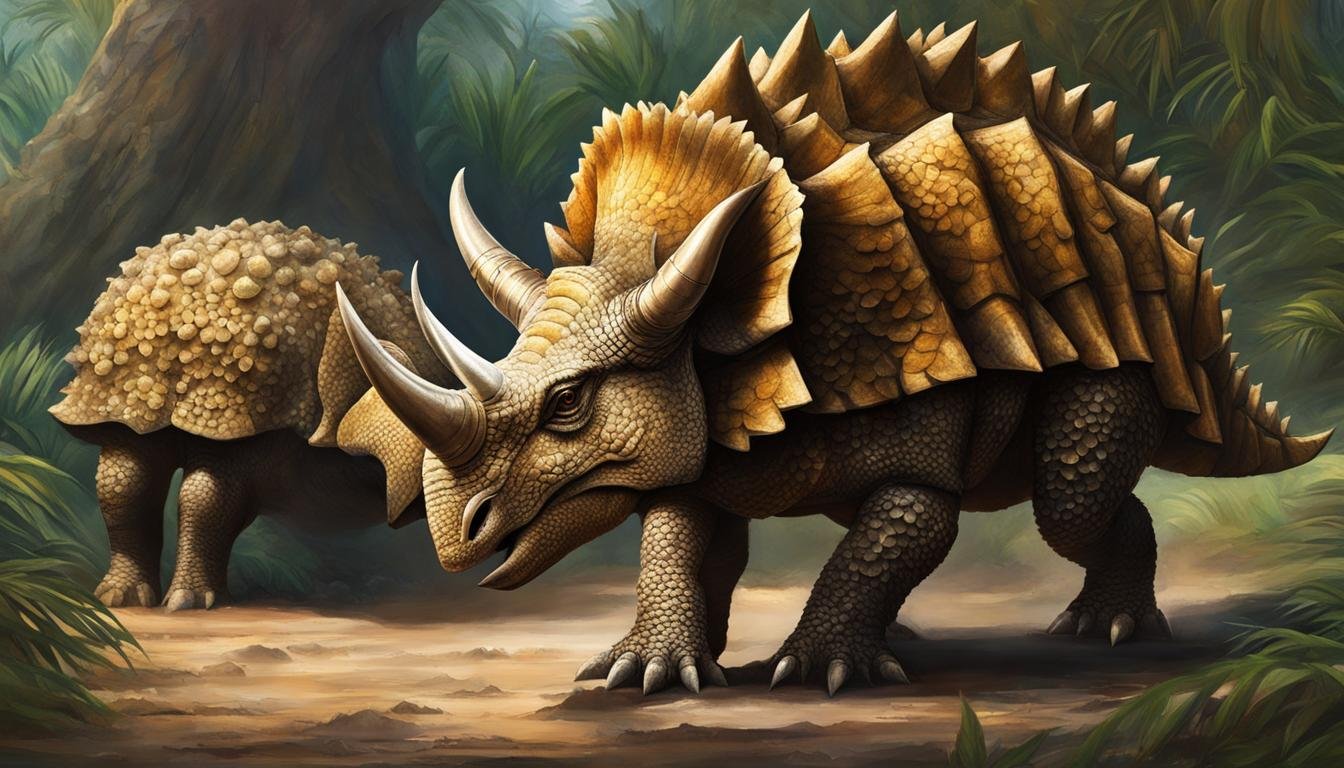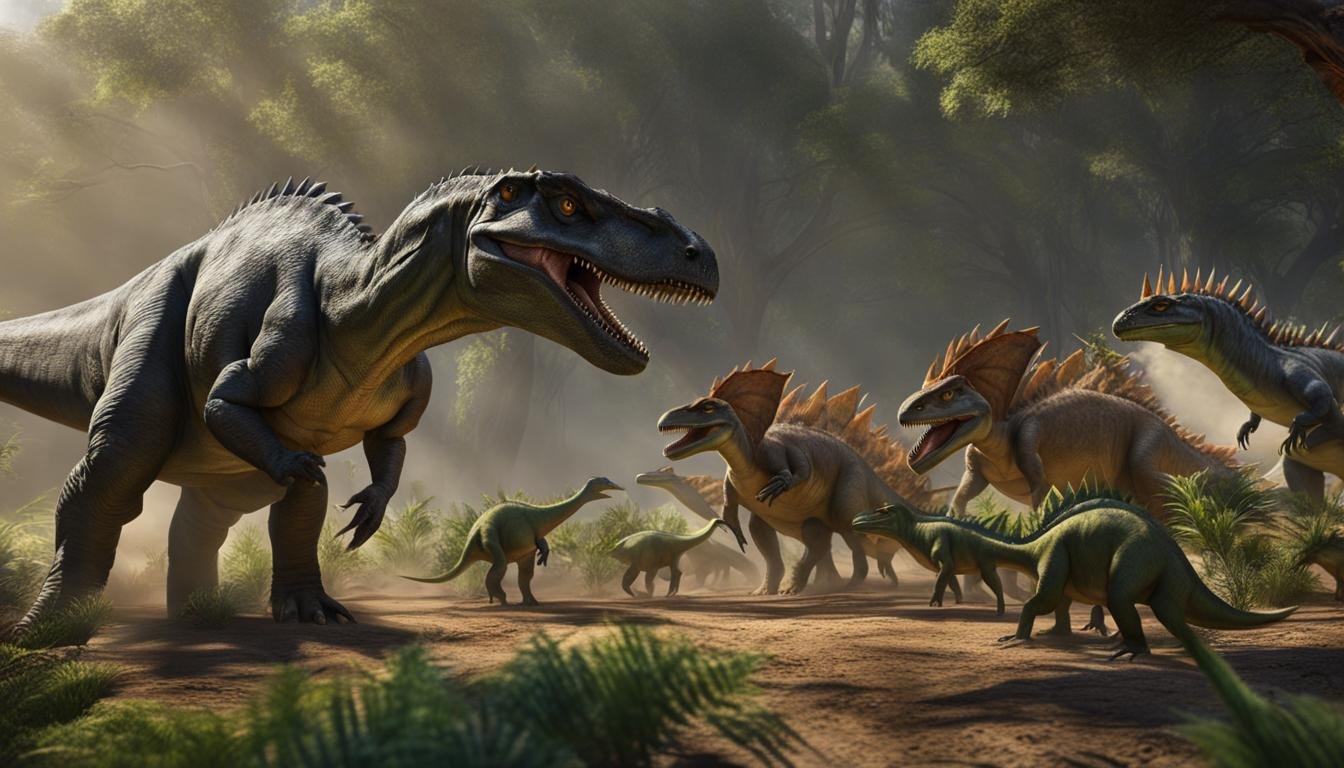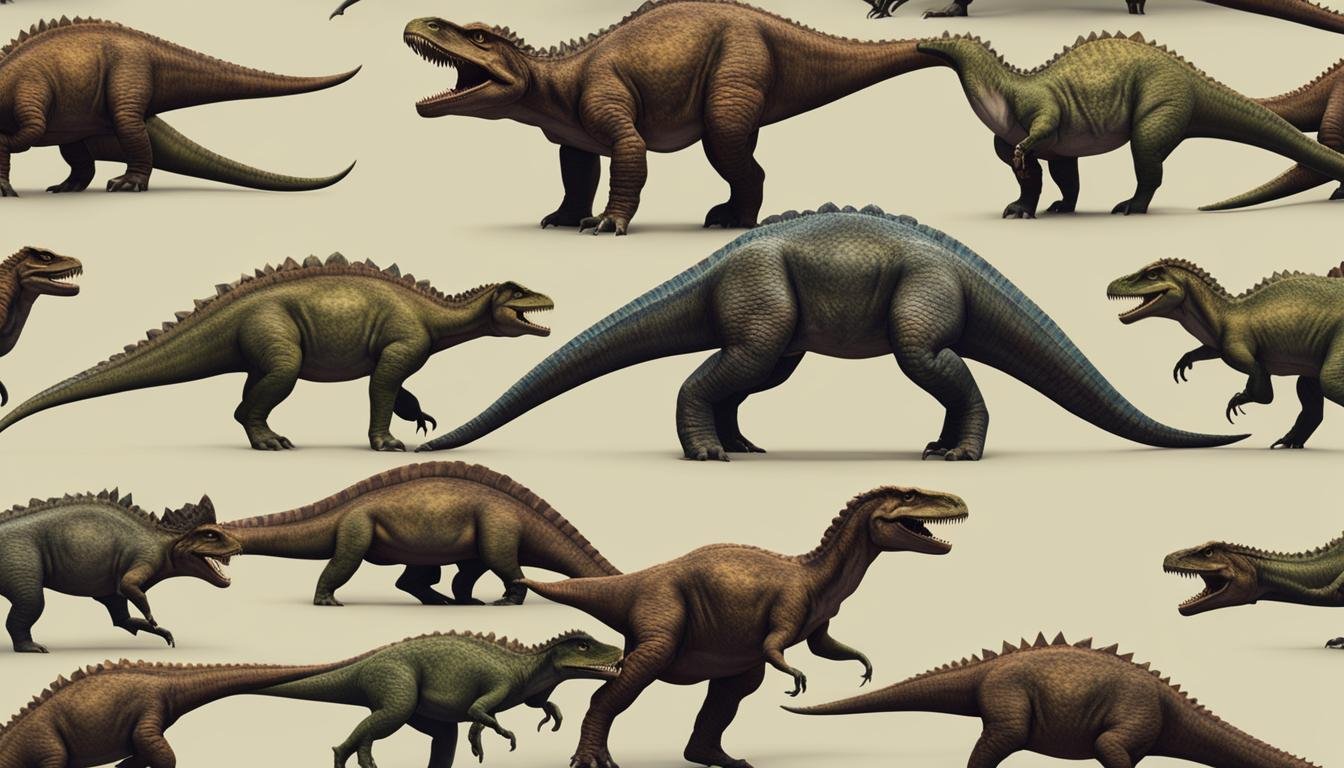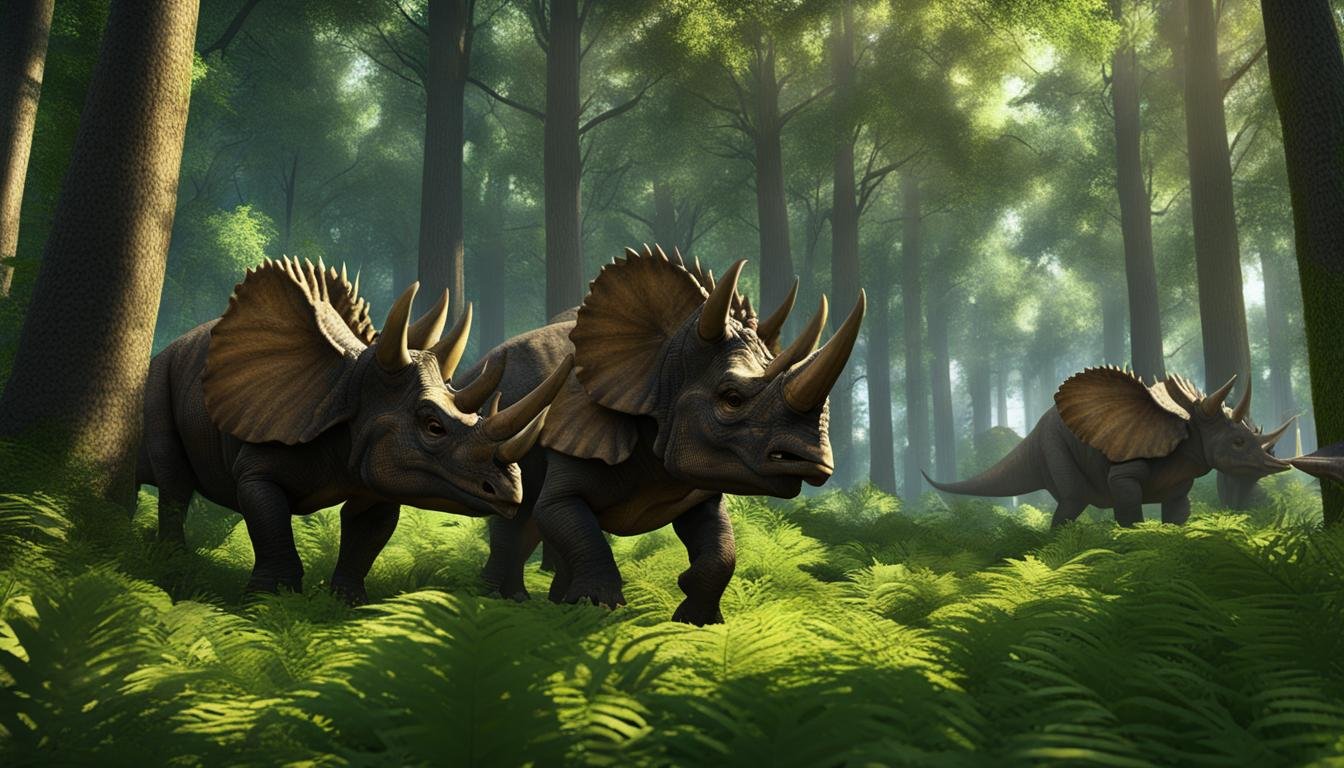Dinosaurs, fascinating creatures that once roamed the Earth, possessed an array of defense mechanisms and survival tactics that allowed them to thrive in a dangerous prehistoric world. From their physical adaptations to their behavioral strategies, dinosaurs showcased remarkable evolutionary strategies to protect themselves from predators and ensure their survival.
| Main Point | Description |
|---|---|
| Natural Defense Mechanisms | Dinosaurs possessed innate defense mechanisms to protect themselves against predators. |
| Physical Adaptations for Defense | They evolved physical adaptations like claws, head shoves, and whipping tails for defensive purposes. |
| Body Armor in Dinosaurs | Dinosaurs had body armor, including horns, plates, and spikes, which provided additional protection. |
| Use of Camouflage and Mimicry | Camouflage and mimicry were techniques utilized by dinosaurs to blend into their environments for safety. |
| Diverse Locomotion Strategies | Different modes of locomotion, such as bipedalism and quadrupedalism, enabled dinosaurs to move effectively in various habitats. |
Claws, Head Shoves, and Whipping Tails
Dinosaurs had a variety of natural defense mechanisms and survival tactics that enabled them to protect themselves from predators in their dangerous prehistoric world. One of these defensive strategies was the use of their claws. Dinosaurs had hard and stiff claws that they used to slash and scratch predators. While not fatal, these claws were effective in deterring attackers and allowing dinosaurs to escape.
Another defensive tactic employed by dinosaurs was the use of head shoves. Herbivorous dinosaurs, in particular, would use their heads and necks to bat away or hit predators. This defense mechanism was most effective when the herbivore was larger or had a longer neck than the predator. By using their heads as a weapon, dinosaurs could fend off potential threats and increase their chances of survival.
In addition to claws and head shoves, dinosaurs also utilized their tails as a form of defense. Whipping the tail was a common tactic, as the force from a long tail could startle and deter attackers. This defense mechanism was seen in various dinosaur species and even exists today in some modern reptiles, such as alligators and crocodiles. The ability to use the tail as a weapon gave dinosaurs an added advantage in protecting themselves from predators.
| Defense Mechanism | Description |
|---|---|
| Claws | Dinosaurs had hard and stiff claws that they used to slash and scratch predators, deterring attackers and allowing them to escape. |
| Head Shoves | Herbivorous dinosaurs used their heads and necks to bat away or hit predators, increasing their chances of survival. |
| Whipping Tails | Dinosaurs utilized their tails as a form of defense, delivering a forceful whip that could startle and deter attackers. |
In conclusion, dinosaurs possessed an array of defense mechanisms and survival tactics that helped them navigate their perilous prehistoric environment. Claws, head shoves, and whipping tails were just a few of the strategies they used to fend off predators and increase their chances of survival. By understanding these fascinating adaptations, we can gain insights into the remarkable world of dinosaurs.
Dinosaur Body Armor and Weapons
One of the fascinating aspects of dinosaur adaptations is their development of body armor and weapons. These physical features provided dinosaurs with enhanced protection and the means to defend themselves against predators. Let’s explore some of the remarkable examples of dinosaur body armor and weapon adaptations.
Horns
Some dinosaurs, such as Triceratops and Styracosaurus, possessed impressive horns on their heads. These horns were not just for display; they served as formidable weapons. With their sturdy and sharp horns, these dinosaurs could inflict serious damage on potential attackers. The horns were likely used in defensive confrontations, as well as for intraspecific combat during mating rituals or territory disputes.
Plates and Spikes
Dinosaurs like Stegosaurus and Ankylosaurus were equipped with bony plates and spikes adorning their bodies. These defensive structures acted as a deterrent against predators by making it difficult for them to deliver fatal blows. The plates and spikes provided an extra layer of protection for the vital organs, helping these dinosaurs survive in an environment teeming with carnivorous threats.
Body Armor
In addition to horns, plates, and spikes, some dinosaurs developed various forms of body armor. Ankylosaurus, for example, had an extensive bony shell covering its back, while Nodosaurus had a series of large bony knobs. These forms of body armor not only shielded dinosaurs from attacks but also acted as a visual deterrent, cautioning predators to think twice before attempting an ambush.
Overall, the presence of horns, plates, spikes, and body armor in dinosaurs showcases their remarkable adaptations for defense and survival. These adaptations allowed them to fend off threats and thrive in a world full of danger. As we delve deeper into the world of dinosaurs, we continue to uncover fascinating insights into their evolution and the diverse strategies they employed to ensure their survival.
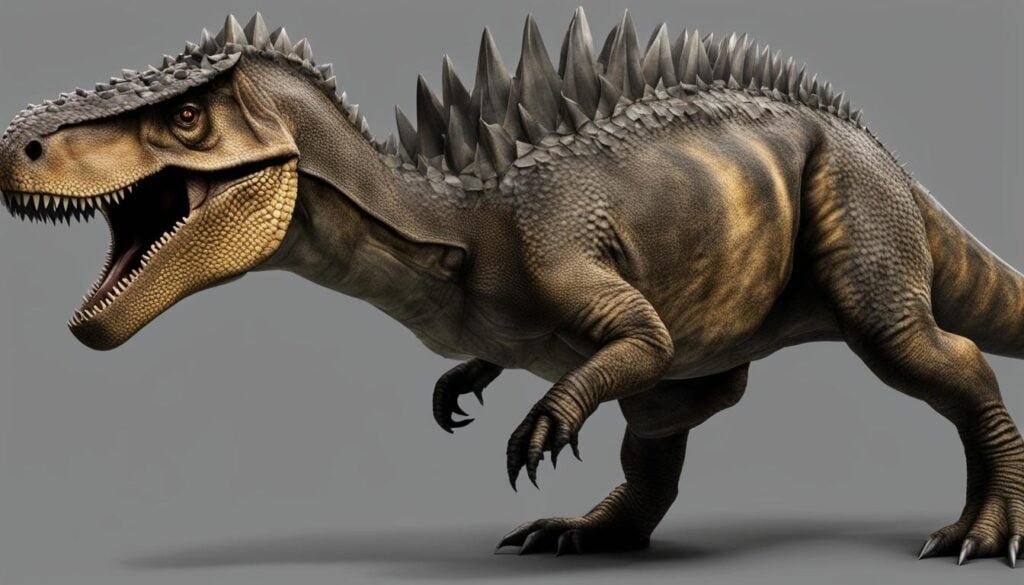
Dinosaur Locomotion: Bipedalism, Quadrupedalism, and Other Strategies
Dinosaurs, with their varied shapes and sizes, employed different locomotion strategies to adapt and thrive in diverse environments. Let’s explore the fascinating ways in which dinosaurs moved!
Bipedalism: Running on Two Legs at Impressive Speeds
Some dinosaurs, such as the iconic Tyrannosaurus rex, were bipedal, meaning they walked and ran on two legs. Bipedal dinosaurs developed long, powerful hind limbs that allowed them to achieve remarkable running speeds. With their lightweight bodies and agile movements, these dinosaurs were highly effective hunters or efficient prey, depending on their size and predatory capabilities.
Bipedalism was advantageous for dinosaurs in several ways. By keeping the body elevated off the ground, dinosaurs gained a better field of vision, enabling them to scan for potential threats or prey. Additionally, bipedalism freed up the front limbs for other purposes, such as seizing and grabbing objects or prey. This adaptation reflects the remarkable evolutionary innovation and efficiency that dinosaurs possessed.
Quadrupedalism: Enhanced Stability and Support
While bipedalism was predominant among theropod dinosaurs, many other dinosaurs, such as sauropods and ankylosaurs, adopted a quadrupedal stance. These dinosaurs relied on four limbs for locomotion, which provided increased stability and support, especially for larger and heavier bodies.
Sauropods, with their elongated necks and tails, used quadrupedalism to graze on vegetation at great heights. Their sizeable bodies required a steady base to support their weight, and quadrupedal locomotion fulfilled this role effectively. Ankylosaurs, on the other hand, used their low-slung bodies and robust limbs for defense. The quadrupedal stance enabled them to move slowly but powerfully, deterring potential predators with their armored bodies and clubbed tails.
Swimming, Gliding, and Flying: Adaptations to Unique Environments
While most dinosaurs relied on walking or running on land, some dinosaurs ventured into other environments, such as water and air. Certain dinosaurs evolved adaptations for swimming, with streamlined bodies and limb modifications resembling flippers. These aquatic dinosaurs, like the ichthyosaurs and plesiosaurs, navigated ancient oceans with remarkable agility.
Furthermore, a few dinosaur species developed the ability to glide and even fly. These dinosaurs, known as pterosaurs, had wings supported by elongated finger bones. They soared through the skies, taking advantage of the aerial environment to find food or escape predators. The evolution of flight in dinosaurs represents a remarkable transition and highlights their capacity for adaptive innovation.
Throughout their existence, dinosaurs demonstrated incredible locomotion strategies, allowing them to conquer a range of environments with varying challenges. From bipedal sprinters to quadrupedal grazers, and even aquatic swimmers and aerial gliders, dinosaurs utilized a diverse array of adaptations that showcased their exceptional resilience and survival instincts.
| Locomotion Strategy | Key Characteristics | Example Dinosaurs |
|---|---|---|
| Bipedalism | – Running on two legs – Lighter body structure – Enhanced field of vision | Tyrannosaurus rex Velociraptor |
| Quadrupedalism | – Walking on four legs – Increased stability and support – Suitable for large body sizes | Brachiosaurus Ankylosaurus |
| Swimming | – Streamlined bodies – Limb modifications resembling flippers | Ichthyosaurs Plesiosaurs |
| Gliding and Flying | – Wings supported by elongated finger bones | Pterosaurs |
By understanding the locomotion strategies of dinosaurs, we gain valuable insights into their behavior and adaptations. These remarkable creatures continue to captivate our imaginations, reminding us of the incredible diversity and ingenuity that once thrived on Earth.
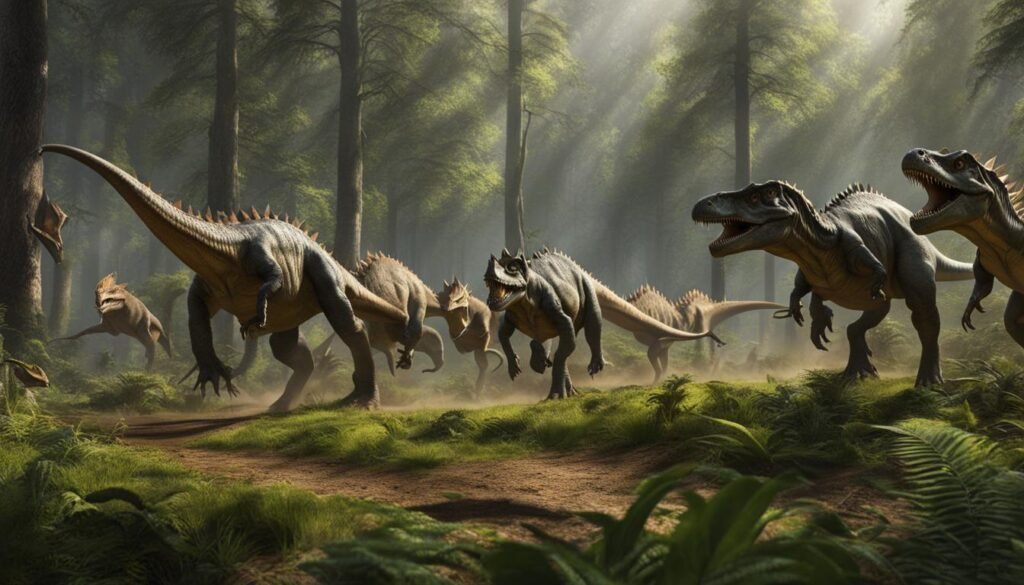
Conclusion
In conclusion, dinosaurs possessed a range of defense mechanisms and survival tactics that allowed them to adapt and thrive in a perilous prehistoric world. Their evolutionary strategies enabled them to overcome the challenges of a harsh environment and establish their dominance for millions of years.
With their sharp claws, dinosaurs were able to fend off predators by slashing and scratching, deterring attackers and ensuring their own escape. Additionally, herbivorous dinosaurs utilized head shoves and whipping tails as effective means of defense. These natural weapons, combined with body armor in the form of bony plates, scales, and spikes, provided dinosaurs with formidable protection against carnivores.
Furthermore, dinosaurs developed various locomotion strategies to navigate different habitats. Bipedal dinosaurs, like theropods, could achieve remarkable running speeds, while quadrupedal dinosaurs, such as sauropods and ankylosaurs, enjoyed enhanced stability. Certain dinosaurs even adapted for swimming, gliding, or flying, enabling them to thrive in a diverse range of environments.
The adaptability displayed by dinosaurs, both in terms of defense mechanisms and locomotion strategies, highlights their remarkable resourcefulness. By studying and understanding these aspects, we gain invaluable insight into the fascinating world of dinosaurs and the extraordinary lengths they went to ensure their survival.

